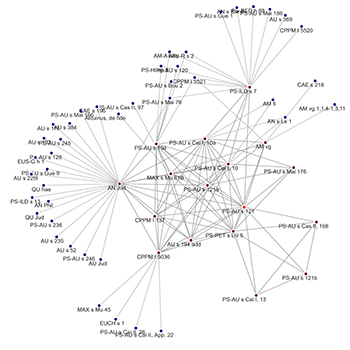The pseudo-Augustinian S. App. 121 and its medieval textual connections
A testcase for the development of network visualizations in the PASSIM research tool
Keywords:
Network visualizations, Reception Studies, Patristic and Medieval PreachingAbstract
This article investigates the benefits and challenges inherent in using networks to visualize and analyze the textual connections between Latin patristic sermons as transmitted in medieval manuscripts. Patristic sermons, which had a dynamic reception in the Middle Ages and were the subject of an extensive and complex scholarly tradition, are an ideal test case for an inquiry into the manipulations of texts as part of the process of textual transmission in the Middle Ages. Using the Pseudo-Augustinian sermo 121 as a case study, first we will describe the textual history of the sermon. Subsequently, we will translate this narrative of the scholarly history of PS-AU s 121 into network visualizations of increasing complexity and reflect on the accuracy, usefulness and challenges of this method for the study of the myriad textual connections between patristic sermons in medieval contexts. This case study on network visualizations is part of a larger project to develop a digital application and database, the PASSIM Research Tool, to chart the dissemination and manipulation of patristic preaching in the Middle Ages.

Downloads
Published
How to Cite
Issue
Section
License
Copyright (c) 2023 Iris Denis, Shari Boodts

This work is licensed under a Creative Commons Attribution-NoDerivatives 4.0 International License.
A Creative Commons Attribution-NoDerivatives 4.0 (CC BY-ND 4.0) license applies to all contents published in JHNR. While articles published on JHNR can be copied by anyone for noncommercial purposes if proper credit is given, all materials are published under an open-access license with authors retaining full and permanent ownership of their work. For details please consult the Open Access and Copyright Notice.

